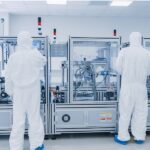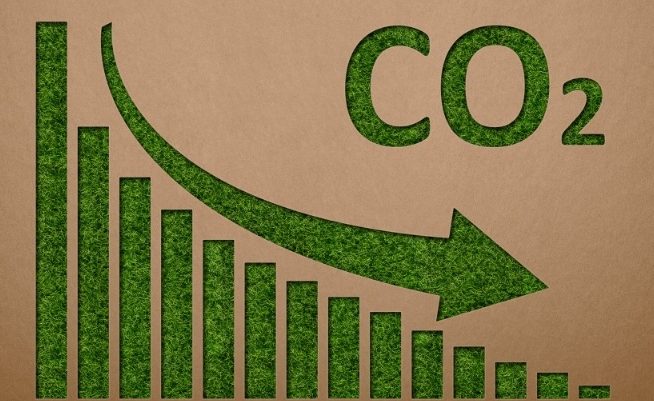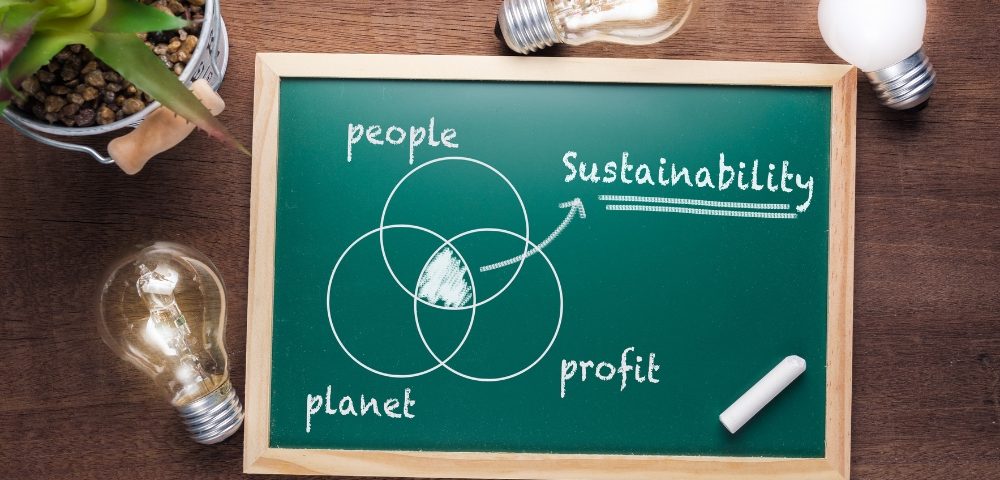
Why Choose Pristine Clean Bags® as Your Clean Room Packaging Supplier in 2024? (And Beyond)
February 7, 2022
Single Use Technology Guide
September 5, 2023Understanding Sustainability in Flex Packaging
How Cleanroom Packaging Manufacturers Can Achieve Sustainable Goals
Flexible packaging protects delicate items, ensuring they remain free from dust and other airborne pollutants. It is commonly used in industries such as food manufacturing, aerospace, pharmaceutical, medical and electronics, where product quality and safety are highly prioritized. In today’s eco-conscious society, where people are more environmentally conscious than ever, it is essential for all industries to embrace sustainable practices. Packaging is one area that requires special attention.
While cleanroom packaging’s main goal is protecting sensitive products, sustainability is just as important as cleanliness. By using environmentally friendly materials, enhancing the design of the products, committing to recyclability and reducing waste, a perfect blend of cleanliness and sustainability can be achieved.
This article will provide an in-depth look at sustainability in flexible packaging and how it can help create a more eco-friendly and sustainable future, even in sectors heavily reliant on plastic.
What is Sustainability?
Sustainability is the practice of using and preserving natural resources in ways that will enable long life for both future generations of people as well as planet Earth. Sustainability is usually divided into three broad categories:
Environmental Sustainability
Environmental sustainability refers to preserving Earth’s ecosystems by nurturing its biodiversity and promoting waste and pollution reduction. There are numerous ways to care for natural resources. Some include generating renewable energy, conserving forests, recycling, cutting down on fossil fuel burning and reducing industry-related emissions.
Economic Sustainability
This type entails efficient and fair resource management (natural, human, and financial), which encourages a healthy economy. This category covers responsible practices such as expanding access to education, increasing job opportunities, fair trade, and developing and maintaining a resilient and flexible economy.
Social Sustainability
Here, the center of attention is on raising the standard of living for all people. The main goal is to promote social justice and human rights for everyone by covering social matters such as health, education, peace, equality, dignity, etc.
Sustainability in Flexible Packaging
Nowadays, people want to reduce their negative impact on the environment. Hence, they opt for solutions that will be eco-friendly. Consumers also want sustainable packaging because everything we do matters for our planet in the long run.
Sustainability in flexible and cleanroom packaging is all about making sure the materials and processes are eco-friendly, cost-effective and keeping the integrity of the product, especially in controlled spaces like cleanrooms. There are a few things to keep in mind:
Eco-friendly (Compostable & Biodegradable) Materials
Certain types of flex packaging can be made from materials that can be composted or biodegraded. Compared to conventional plastics, compostable materials decompose faster, so they have a lower environmental footprint in the long run. By choosing these materials, companies can reduce their dependence on non-recyclable resources and reduce waste and pollution.
Waste Reduction & Recycling
The goal of sustainable packaging is to reduce waste throughout the life cycle. This includes:
- Optimizing packaging designs to minimize material consumption
- Applying for local packaging waste recycling programs
- Encouraging recyclable materials utilization in production
It is important to note that not all recyclable materials can be processed in every location. Some technically recyclable materials may not be eligible for local recycling programs. Therefore, designing flex packaging that can be divided into component materials can increase its chances of being recycled.
Life Cycle Assessment (LCA)
Sustainability in clean room packaging begins with life cycle assessment (LCA). It assesses the environmental footprint of the whole lifecycle of packaging, from raw material sourcing, through manufacturing and transport, to product utilization and disposal.
LCAs help in determining areas which can be improved as well as guidance for making more sustainable decisions.
Innovative Design
Innovative products design is of utmost importance. Ideally, it encourages product protection, functionality, and environmental considerations. Flexible packaging is designed to be space-saving, lightweight, and easy to recycle. Furthermore, innovative designs reduce material consumption, transport expenses, and environmental impact.
Reducing Carbon Footprint with Flex Packaging
Lightweight and Efficient
The significant reduction in weight means fewer trucks, less fuel and less harm to the environment using transportation.
Less Carbon Dioxide
Compared to glass, plastic or aluminum containers, flexible packaging emits less carbon dioxide. Even when considering recyclability, it has a smaller environmental impact.
Food Waste Reduction
Around one-third of all food produced goes to waste. This wastes resources used in production and transportation. Flexible packaging can help combat this issue by extending the shelf life of food. It can keep food fresh for up to 90 days.
Transforming Clean Rooms into Sustainable Spaces
Clean rooms have always been the epitome of the most rigorous cleanliness requirements and highly controlled environments, mainly in industries such as aerospace, pharmaceuticals, biotechnology, electronic manufacturing, and automotive. However, in light of the urgent need for environmentally friendly practices across all industries, the concept of making clean rooms sustainable has gained quite a lot of attention lately.
This vital change recognizes the importance of cleanrooms in innovation, production, and research while emphasizing the growing need to reduce their impact on the environment.
By implementing principles of sustainability into cleanroom operations, businesses and organizations reduce their carbon footprint and contribute to creating a better future for the planet.
The fundamental cornerstones of transforming clean rooms into a more earth-friendly environment are:
- energy-saving technologies,
- renewable energy-sources,
- eco-friendly materials
The aim is to optimize resource utilization and reduce energy consumption and waste. With more and more organizations recognizing the importance of sustainability, a vast array of valuable information is available through dedicated websites, studies, and numerous publications.
Cleanrooms can lead the way on this journey by showing that they care about the environment, helping the world become more sustainable, and inspiring other industries to do the same. By working together to make cleanrooms sustainable, we can create a world where cutting-edge technologies and research work together to create a better path ahead.

How to Make Cleanrooms Environmentally Friendly?
Some of the primary environmental challenges in cleanrooms involve materials used, the energy used by various equipment (e.g., lights, air conditioners), and production of wastewater that is contaminated. Some experts believe that adopting green practices always comes with an associated cost. However, many of these practices can result in long-term cost savings. For example, energy conservation is a high priority. The US government provides tax incentives to encourage energy saving. It’s important to focus on creating an eco-friendly space while considering both short-term and long-term costs.
Eco-Friendly Materials
Choosing the right materials in cleanrooms to promote sustainability is of utmost importance. These materials should be effective for clean room operations and good for the environment. By using sustainable materials, we can reduce waste, save resources, and support a greener future. Various types of sustainable materials can be used, such as recycled plastics, materials made from plants, and coating that doesn’t release harmful chemicals.
These materials meet the high cleanliness standards of cleanrooms and help protect the environment by reducing pollution. Green solutions include sustainable flex packaging, biodegradable wipers, reusable containers, and similar.
Modular is Better
Always opt for modular clean rooms when you can, as they are more sustainable than fixed ones. They can easily be moved, reconfigured, or stored. Modular clean rooms are built with recycled materials such as aluminum or steel. Manufacturers are also incorporating recycled materials in clean room panels to increase sustainability. Wall and ceiling systems can be reused, and filters can be reconfigured to meet various ISO requirements. All these benefits contribute to environmental sustainability.
Air Flow and Fan Systems
Energy consumption in cleanrooms is high, mainly due to the air filters. One way to reduce energy consumption is to use filter fans with efficient motors. Another way to reduce energy consumption is to install intelligent control systems that run the fans according to work schedules.
By reducing the number of individuals that enter and leave the cleanroom, energy and labor costs can be reduced. It also reduces the amount of clothing that needs to be laundered or disposed of. While energy efficiency is the primary objective, it also improves a company’s sustainability profile.
Clothing
Cleanroom clothing is specially designed to release minimal particles and is typically non-woven. However, many companies are starting to shift away from disposable clothing or changing how clothing is used to promote sustainability.
For example, glove liners can cut down the number of gloves needed to perform the task. By switching to reusable products, such as goggles, gowns, and shoe covers, waste is reduced, costs are lowered, and environmental impact is minimized. Even industrial laundry machines are now more power-efficient, consume less water and recycle rinse water.
Pristine Clean Bags®: Sustainable Flexible Packaging Solutions
Pristine Clean Bags® flex packaging offers many benefits. Our cleanroom bags (HDPE, LDPE, ESD and Nylon), films and tubing come in different sizes, shapes, and designs so businesses can choose what works best for them. Our cleanroom packaging is made with ISO-certified and FDA-approved materials, with perfect cleanliness levels., and provides excellent protection against external factors. We offer solutions tailored to the space industry, electronic, medical, automotive and life science sectors. For more information, contact us or visit our online store and see products in stock ready to be shipped. If you demand the highest quality standards and on-time delivery in US and EU, Pristine Clean Bags® has the solution.


